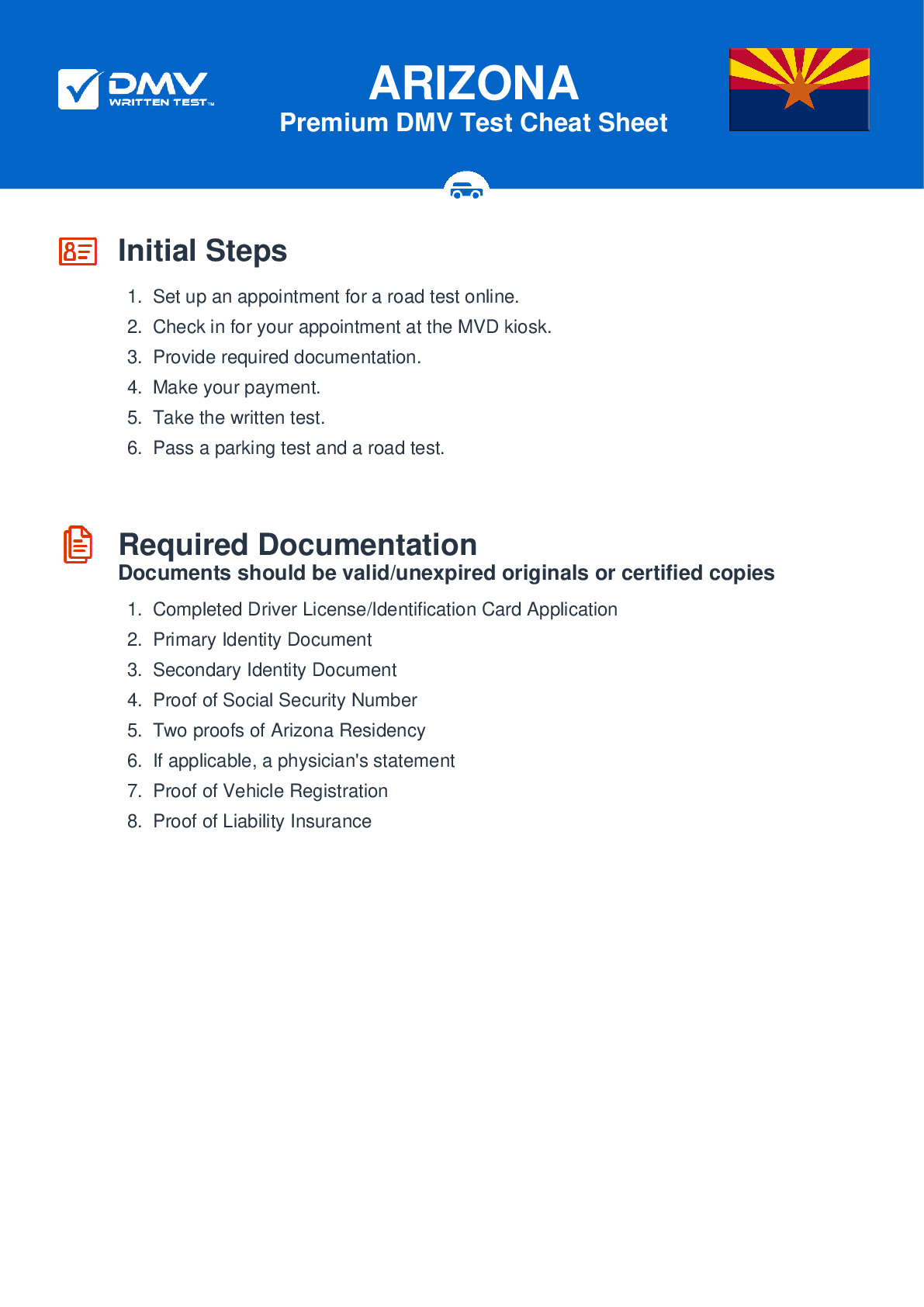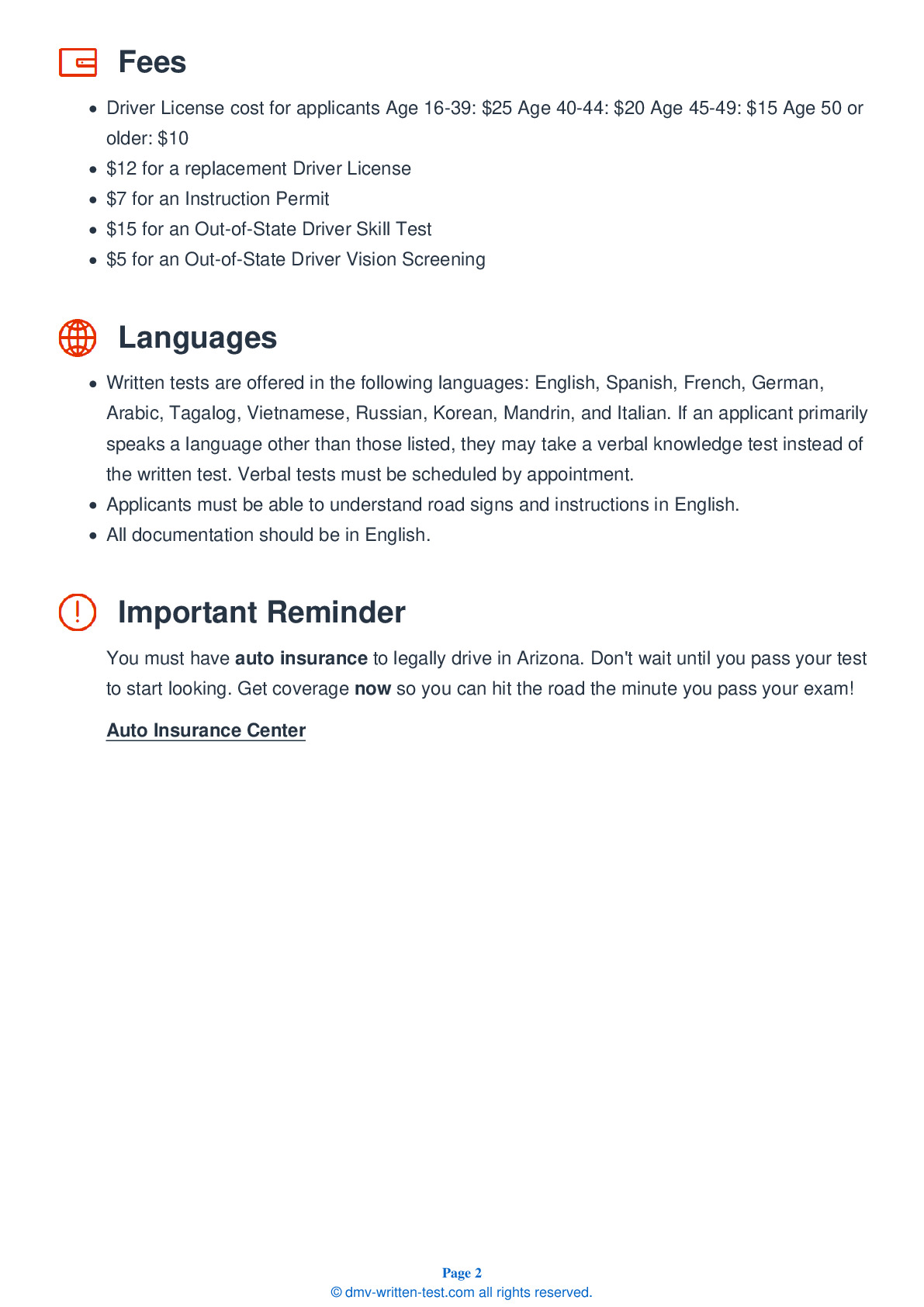2025 Arizona Permit Test 8
The following questions are from real DMV written tests. These are some of the actual permit questions you will face in Arizona. Each permit practice test question has three answer choices. Select one answer for each question and select "grade this section." You can find this button at the bottom of the drivers license quiz. For a complete list of questions and answers for Arizona please visit https://cheat-sheets.dmv-written-test.com/en/arizona/car.
Number of Tests
Number of Question
Passing Score
1. A broken yellow line between two lanes of traffic means:
Explanation
Dashed yellow lines separate single lanes of traffic moving in opposite directions. Passing is allowed when there is no oncoming traffic in the passing lane.
2. "No zones" are areas around trucks where cars:
Explanation
"No zones" are areas around trucks or buses in which cars disappear into the larger vehicle's blind spots. "No zones" can also be defined as areas in which cars are so close to the larger vehicle that they restrict the truck or bus driver’s ability to stop and maneuver safely. A car being in a "No zone" greatly increases the potential for a crash.
3. A steady yellow traffic signal light is a warning that the light is about to change to red. If you are already within the intersection when a green light changes to yellow, you should:
Explanation
If you are already within an intersection when the traffic light turns yellow, you should clear the intersection as quickly as possible.
4. After you have passed a vehicle moving in the same direction, it is safe to move back into the right lane:
Explanation
When passing, you should not return to your original lane until you can see both headlights of the passed vehicle in your rearview mirror. Always check your blind spots before moving back into your original lane.
5. As you approach an intersection with a flashing yellow light:
Explanation
A flashing yellow light means that you should slow down, check for cross traffic, and proceed with caution.
6. A blood alcohol concentration of 0.02 percent:
Explanation
Every 0.02 percent increase in blood alcohol concentration nearly doubles a driver's risk of being in a fatal crash.
7. This sign means you are approaching a railroad crossing that does not have a signal. You should:

Explanation
At a railroad crossing marked with this sign, a driver should look both ways, listen for any trains, and be prepared to stop if any trains are nearby. Never try to outdrive an oncoming train.
8. If you see orange construction signs and cones on a freeway, you must:
Explanation




